Welcome to your nursing test bank and NCLEX practice questions for maternity and newborn nursing. This nursing test bank includes 500+ practice questions to test your competence on the concepts behind maternal and child health nursing, maternity nursing, and obstetric nursing.
Maternity Nursing and Newborn Nursing Test Bank
In this section are the practice quiz and questions for maternity nursing and newborn care nursing test banks. There are 545 NCLEX-style practice questions in this nursing test bank. We’ve made a significant effort to provide you with the most informative rationale, so please read them.
Notable topics included in this nursing test bank include nursing care of the pregnant mother (obstetric nursing), labor and delivery, prenatal nursing care, antepartum, intrapartum, and postpartum nursing care, nursing care of patients with preeclampsia, placental and cord anomalies, cesarean birth, labor complications, postpartum depression, GTPAL and more.
Quiz Guidelines
Before you start, here are some examination guidelines and reminders you must read:
- Practice Exams: Engage with our Practice Exams to hone your skills in a supportive, low-pressure environment. These exams provide immediate feedback and explanations, helping you grasp core concepts, identify improvement areas, and build confidence in your knowledge and abilities.
- Challenge Exams: Take our Challenge Exams to test your mastery and readiness under simulated exam conditions. These exams offer a rigorous question set to assess your understanding, prepare you for actual examinations, and benchmark your performance.
- You’re given 2 minutes per item.
- For Challenge Exams, click on the “Start Quiz” button to start the quiz.
- Complete the quiz: Ensure that you answer the entire quiz. Only after you’ve answered every item will the score and rationales be shown.
- Learn from the rationales: After each quiz, click on the “View Questions” button to understand the explanation for each answer.
- Free access: Guess what? Our test banks are 100% FREE. Skip the hassle – no sign-ups or registrations here. A sincere promise from Nurseslabs: we have not and won’t ever request your credit card details or personal info for our practice questions. We’re dedicated to keeping this service accessible and cost-free, especially for our amazing students and nurses. So, take the leap and elevate your career hassle-free!
- Share your thoughts: We’d love your feedback, scores, and questions! Please share them in the comments below.
Quizzes included in this guide are:
| Quiz No. | Quiz Title | Questions |
|---|---|---|
| Maternity Nursing Test Banks UPDATED! | ||
| 1 | Maternity Nursing NCLEX Challenge Exam NEW! | 75 |
| 2 | Maternity Nursing NCLEX Challenge Exam NEW! | 75 |
| 3 | Maternity Nursing NCLEX Challenge Exam NEW! | 75 |
| 4 | Maternity Nursing NCLEX Challenge Exam NEW! | 75 |
| 5 | Maternity Nursing NCLEX Challenge Exam NEW! | 75 |
| 6 | Maternity Nursing NCLEX Practice Exam NEW! | 25 |
| 7 | Maternity Nursing NCLEX Practice Exam NEW! | 25 |
| 8 | Maternity Nursing NCLEX Practice Exam NEW! | 25 |
| 9 | Maternity Nursing NCLEX Practice Exam NEW! | 25 |
| 10 | Maternity Nursing NCLEX Practice Exam NEW! | 25 |
| 11 | Maternity Nursing NCLEX Practice Exam NEW! | 25 |
| 12 | Maternity Nursing NCLEX Practice Exam NEW! | 20 |
Recommended Resources
Recommended books and resources for your NCLEX success:
Disclosure: Included below are affiliate links from Amazon at no additional cost from you. We may earn a small commission from your purchase. For more information, check out our privacy policy.
Saunders Comprehensive Review for the NCLEX-RN
Saunders Comprehensive Review for the NCLEX-RN Examination is often referred to as the best nursing exam review book ever. More than 5,700 practice questions are available in the text. Detailed test-taking strategies are provided for each question, with hints for analyzing and uncovering the correct answer option.
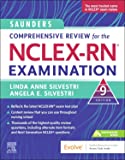
Strategies for Student Success on the Next Generation NCLEX® (NGN) Test Items
Next Generation NCLEX®-style practice questions of all types are illustrated through stand-alone case studies and unfolding case studies. NCSBN Clinical Judgment Measurement Model (NCJMM) is included throughout with case scenarios that integrate the six clinical judgment cognitive skills.
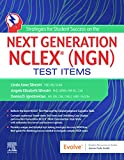
Saunders Q & A Review for the NCLEX-RN® Examination
This edition contains over 6,000 practice questions with each question containing a test-taking strategy and justifications for correct and incorrect answers to enhance review. Questions are organized according to the most recent NCLEX-RN test blueprint Client Needs and Integrated Processes. Questions are written at higher cognitive levels (applying, analyzing, synthesizing, evaluating, and creating) than those on the test itself.
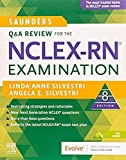
NCLEX-RN Prep Plus by Kaplan
The NCLEX-RN Prep Plus from Kaplan employs expert critical thinking techniques and targeted sample questions. This edition identifies seven types of NGN questions and explains in detail how to approach and answer each type. In addition, it provides 10 critical thinking pathways for analyzing exam questions.
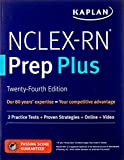
Illustrated Study Guide for the NCLEX-RN® Exam
The 10th edition of the Illustrated Study Guide for the NCLEX-RN Exam, 10th Edition. This study guide gives you a robust, visual, less-intimidating way to remember key facts. 2,500 review questions are now included on the Evolve companion website. 25 additional illustrations and mnemonics make the book more appealing than ever.
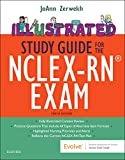
NCLEX RN Examination Prep Flashcards (2023 Edition)
NCLEX RN Exam Review FlashCards Study Guide with Practice Test Questions [Full-Color Cards] from Test Prep Books. These flashcards are ready for use, allowing you to begin studying immediately. Each flash card is color-coded for easy subject identification.
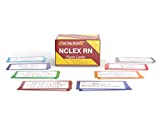
Recommended Links
An investment in knowledge pays the best interest. Keep up the pace and continue learning with these practice quizzes:
- Nursing Test Bank: Free Practice Questions UPDATED!
Our most comprehenisve and updated nursing test bank that includes over 3,500 practice questions covering a wide range of nursing topics that are absolutely free! - NCLEX Questions Nursing Test Bank and Review UPDATED!
Over 1,000+ comprehensive NCLEX practice questions covering different nursing topics. We’ve made a significant effort to provide you with the most challenging questions along with insightful rationales for each question to reinforce learning.
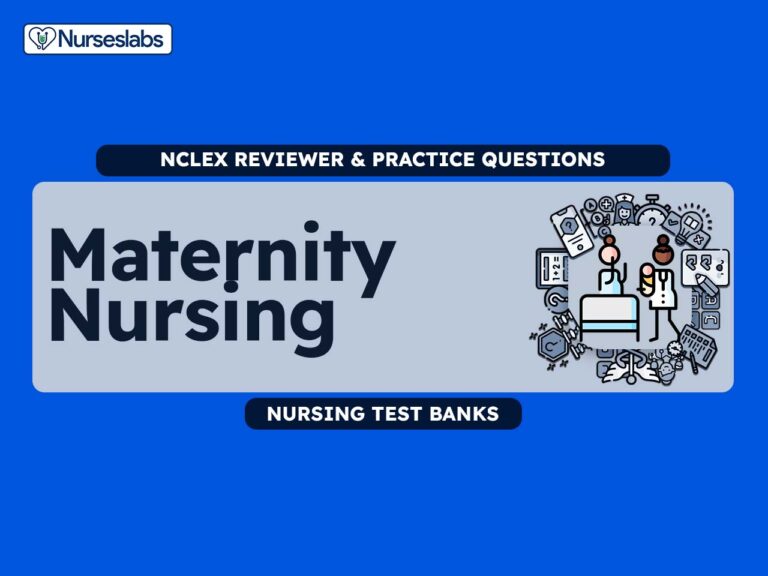
love you guys
Thank you professor 😊
Hi,
Thank you for all of your hard work in putting these tests together!! Just a couple of notes:
on maternal quiz #2:
questions 1,7 and 24 said my answer was incorrect even though I chose the correct answer
rationale on #21 includes rationale from #20
rationale on #51 for C is labeled D
Corrected! Thank you for letting us know.
Thank you Matt. Godspeed!
thank you for all of your hard work to create all of these practice tests!! I just have a couple of questions re: quiz #4 from the Maternal Nursing Section:
#18.) the correct answer states that from 33 weeks on, a mother would be seen q week, but then in the rationale below it states that from 28-36 weeks the mother is seen q 2 weeks…so there appears to be a bit of overlap there? just a bit confused :(
also,
#61.) the correct answer is shown as D but seems to contradict rationale…if those meds should be given when delivery is imminent (per rationale) does that contradict what answer D says about the baby won’t be delivered for at least 3 more hours? also, answer B rationale doesn’t really explain why B is wrong, from what I could understand.
Thanks!
I want to learned more
Hi and thank you again for all of these awesome practice tests!! I appreciate them so much!
Just very confused on quiz #7 question #38:
it shows the correct answer as a pudendal block may inhibit the ability to push…but in the rationale it states that the pudendal block provides anesthesia to the perineum, so wouldn’t that provide numbing for an episiotomy and isn’t that a common reason this type of block is used? I was unable to find info anywhere saying that pudendal blocks might inhibit ability to push. help? :) thanks in advance!
Thank you so much, I learned a lot 🙏
Hi I found these very helpful. I wished there was a way for me to have a pdf copy of these so can keep on reviewing the questions offline
Hi..thanks for your hard and generous work…actually am referring s many people to use this site for revision.
Although I have a question,how can I save my unfinished work and come later to finish instead of it vanishing away and start all over again?.
Again how can one monitor the progress?
Note: Uterine enlargement is indicated as a presumptive sign in several textbooks. Obviously, this is unfair in how this inconsistency can cost losing a point!
presumptives u feel like n/v, no period, fatigue, breast change…..before going to the doctor or taking a pregnancy test. Just go with what is in your textbook.
Much respect to you, for creating this web which really helps students ( Midwife) in their Examination prepation. God glorify you👏👏👏👏
please fix number 23. you can’t get the correct answer. Thanks for this.
Maternal test 2 Question 62 is wrong , thank you!
Hello. It is right. To find the due date you had to add 7 days to January 14, then -3 months. It is October 21.
Maternity test 3 question 14 is wrong. please revisit
It’s correct because the question is asking for the wrong statement among the choices.
Thank you so much Professor for creating this website.
This helped me hone my skills in Maternity Nursing. However, I need to learn other topics in Maternity Nursing as I am not satisfied with the results of my previous practice test.
How can I open the other set of test. Please help. Thanks.
There is a navigation bar before each quiz. Please use that to navigate through the other tests.
Thank you Matt! May your tribe increase! keep up the good work!
The first half of this quiz was great, but then around question 35 it got to more pediatric stuff and I had to quit since I am doing OB and Newborn right now in class.
Please check out the other parts. :)
How can I download the questions
Hello,
First off, your practice tests are truly wonderful. Thank you from the bottom of my heart!
I wanted to ask a question about question #6 in maternal nursing quiz#4. I chose answer D right upper quadrant, and the correct answer says B right lower quadrant. The rationale states the landmark to look for when looking for PMI is the location of the fetal back in relation to the right or left side of the mother and the presentation, whether cephalic or breech. The best site is the fetal back nearest the head.
My question is, if the baby is breech (as noted in the question) and the best site to hear the HR is the fetal back nearest the head (as noted in rationale), then wouldn’t the upper quadrant be a better site given this baby’s presentation, since the head would be nearest to the fundus?
Thank you again.
Thank you so much! I learned a lot of things did know before.
Thank you🥰
thank you soo much!
52 Quiz8 and 54 Quiz7. Two sentences with the same question but different answers
Hi! Quiz 8 #52 has been updated.
Thank you Nurseslabs!
Very informative. Thank you so much.
Thank you for sharing
Have learn alot
Hello! Thank you for your contributions to nursing.
Regarding Maternity Quizi #6, the answer to the fifth question confuses me. I think its correct answer should be G2T1P0A0L1 (G is twice pregnant, T is full term, and its definition should be 37-40 weeks of birth; P is preterm, which is defined as birth at less than 37 weeks; A is abortion or miscarriage, and L is a live child) and its interpretation also conflicts with the contents of the systematic NCLEX-RN.
Thanks, I just hope it gets better!
Hi Alice, you’re right, the question is now updated. Thanks for letting us know! :)
Thanks for the update and the question is helping me a lot to learn new things. We opt for more.
Thank you so much!This was my first attempt without preparation and I was able to answer most of the questions!Its very helpful!
thank you
For quiz number 6 the full term range has changed to 38-40 weeks of gestation. My professor explained that is use to be 37-40. But babies that were born at 37 weeks they noticed an increase number of babies having issues with breathing due to the respiratory system still being developed during the 37th week.
Thank you nurseslabs.com, you really give huge help and make my study life easier. I hope someday you will have OFFICIAL APPLICATION.
Hi Kimberly, You’re welcome! We’re super glad to hear that we’re making your study life easier. That’s exactly what we aim for.
Regarding an official app, we currently only have our website, but it’s something to think about for the future! Your suggestion is definitely noted, and who knows, maybe someday we’ll have that app up and running.
In the meantime, if you need any specific resources or have more feedback, feel free to reach out. Always here to help make your nursing studies a bit smoother!
Thank you so much for sharing this wonderful information.
Hi Pari, You’re very welcome! I’m so glad you found the maternity nursing NCLEX practice questions helpful. If you’re looking for more resources or have any specific topics in mind that you’d like to explore further, just let me know. Always here to support your success!
Thank you so much for sharing this information